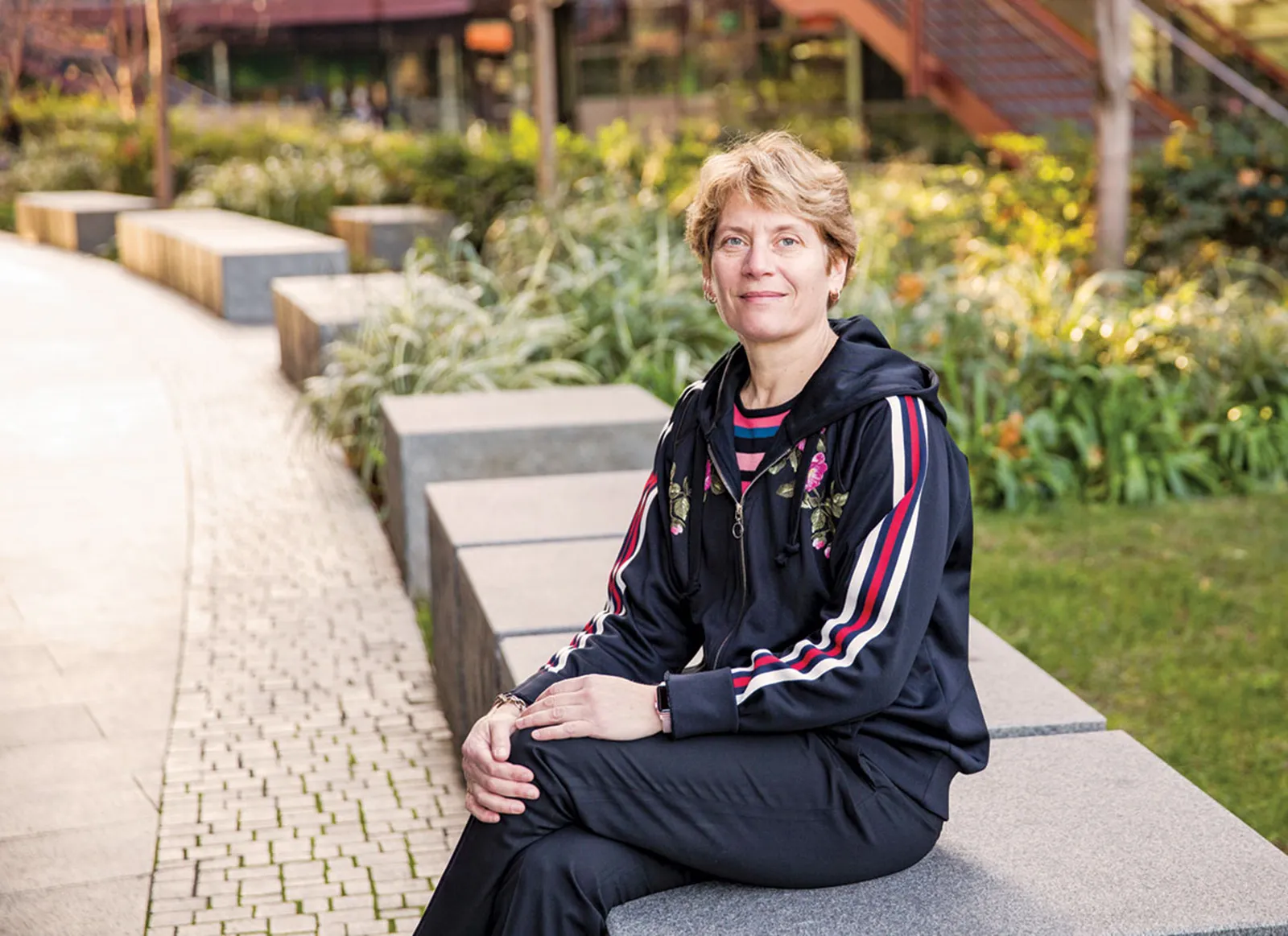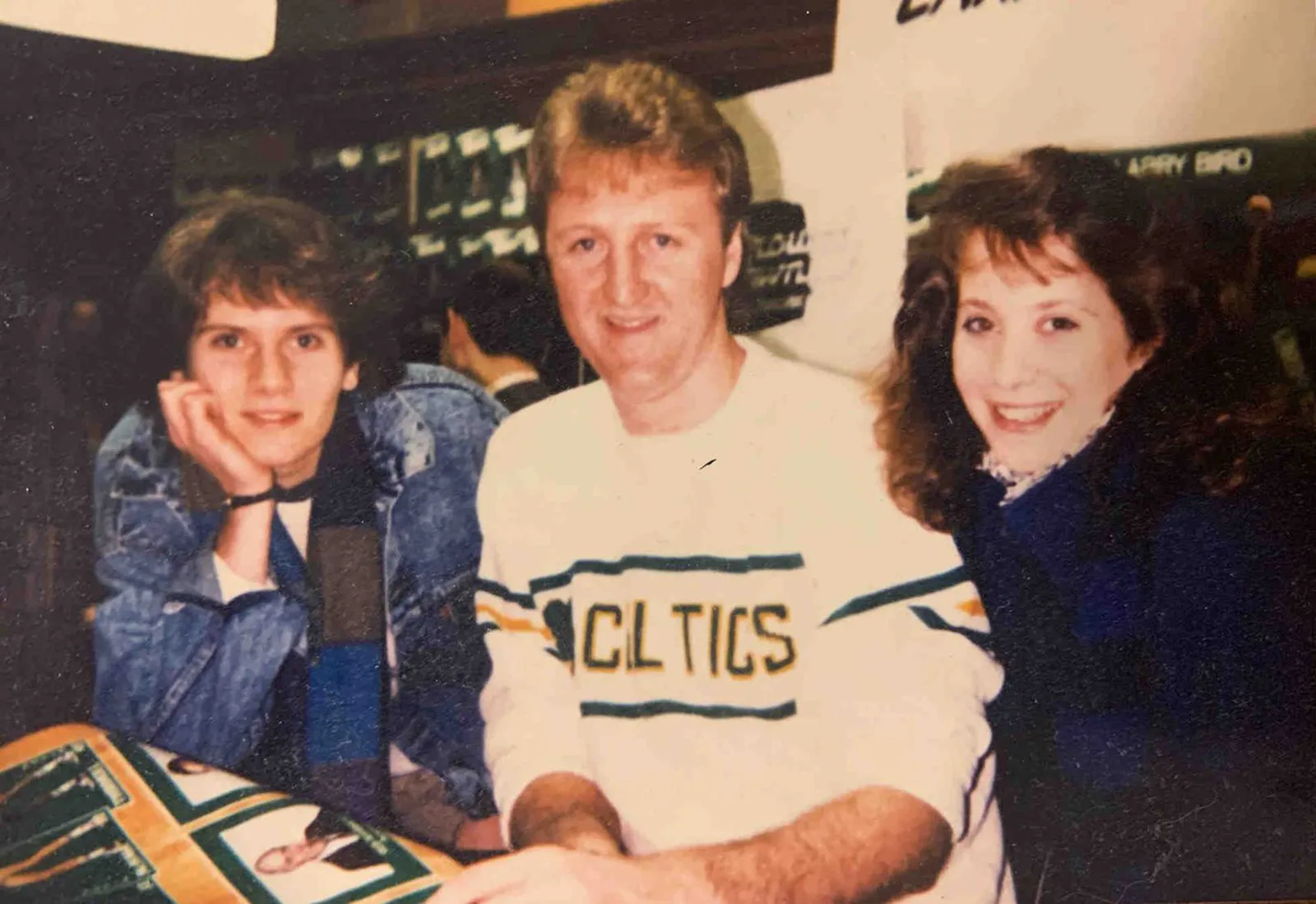True Superhero Carolyn Bertozzi’s Heady Mix of Rock Music, Click Chemistry and Sugar Science
Scientists regularly make vital new discoveries, but few can claim to have invented an entirely new field of science. One who can is Carolyn Bertozzi, whose discovery of bioorthogonal chemistry in 1999 created an entirely new discipline of scientific investigation, which has enabled countless advances in medical science and led to a far greater understanding of biology at a molecular level. She’s also a pioneer for LGBTQ+ scientists, demonstrating the need for greater diversity in laboratories both through her own success, and that of the researchers she has helped inspired to follow in her footsteps.

The high school soccer prodigy
Carolyn was born in 1966 in Boston, Massachusetts, into a scientific family. Her father, William, was a physicist at MIT, and although Carolyn and her two sisters were never placed under any pressure to pursue a career in the sciences, the family home was always filled with unusual gadgets and tools that William had brought home from work. There was a computer terminal - almost unheard of in a residential environment in the 1970s - and what Carolyn has described as “giant magnets”, which provided a source of great entertainment for the young Bertozzi girls.
"The brand new social experience where you activate your gaming skills as you train like a spy."
- TimeOut
Take on thrilling, high-energy espionage challenges across different game zones.

Growing up, few predicted that Carolyn would be the most successful of William’s children. Her elder sister Andrea was a math prodigy, and Carolyn later described how “[Andrea] would have a teacher at elementary school and blow away the teacher and the class with her brilliance, and then I would come along! And the teacher would say, oh, hey! Are you as smart as your sister? And I would look at my feet and kick the dirt around: The answer was no. So I had to differentiate myself”. She did this by excelling at sports - particularly soccer - and although she did not emulate Andrea’s remarkable academic feats, on graduation she did secure a place as a premed student at Harvard.

A year of epiphanies
Carolyn has described her undergraduate years were as a time of realization, both as a gay woman and a chemist. She initially had no intention of becoming a chemist but as a premed student the subject was a mandatory part of her course. She did not enjoy the introductory modules of physical chemistry, with its heavy focus on math, but happily in her sophomore year she was introduced to organic chemistry which is “much more visual, and has a real aesthetic appeal to it”. She immediately fell in love with the subject. She was also expressing the more artistic side of her personality in the evenings, playing keyboards alongside future Rage Against The Machine guitarist Tom Morello in a band called Bored Of Education. The combination of a future two-time Grammy winner and a future Nobel laureate was potent enough to secure the pair an early accolade in the form of the 1986 Ivy League Battle of the Bands trophy.
1986 was also the year that Carolyn came out as a lesbian, but while this period was “a year of epiphanies” for her, it was also a worrying time with the emergence of HIV/AIDS and the additional stigma and prejudice it generated towards queer communities. Carolyn has talked about experiencing a great deal of both sexist and homophobic prejudice throughout her student years, and she chose to tackle these challenges head on, becoming an active participant in activist groups such as ACT UP and Queer Nation who campaigned for better visibility and acceptance of LGBT+ people. Her activism was a large factor in her decision to pursue her Ph.D. at Berkeley, and then her postdoctoral work at the University of California in San Francisco.
Can I click it?
The looming threat posed by HIV also sparked Carolyn’s interest in immunology, and by the time she arrived in California she was making important discoveries that would revolutionize the field. During her studies at Berkeley she discovered that viruses could bind themselves to sugars in the body, and this realization sparked a career-long interest in the previously unfashionable field of glycobiology - the study of sugars. This path led her to discover a completely new field, bioorthogonal chemistry, an adaptation of the “click chemistry” discovery made by her fellow 2022 Nobel laureates, K. Barry Sharpless and Morten Meldal. Click chemistry enables chemists to connect molecules together in a precise fashion, by combining azides (a nitrogen-based molecule) with alkynes (a carbon molecule) in the presence of a copper catalyst. This was a groundbreaking development that allowed scientists to attach probes to specific target molecules, “clicking” them together like LEGO™ bricks, but the requirement for a copper catalyst was a major limitation for the use of this process in medical research, as copper is toxic to most living systems.

Carolyn’s innovation involved changing the structure of the alkyne into a ring formation, which allowed the “click” reaction to take place without the presence of the copper catalyst. She coined the name “bioorthogonal chemistry” for this technique, which suddenly allowed researchers to reliably tag and track specific molecules in the human body, a process likened to being able to attach a GPS to a desired molecule. The implications of this new process were enormous, and Carolyn wasted no time in putting her revolutionary technique to good use. At the time of writing Bertozzi’s name is on over 50 medical patents, and the number of new discoveries made using bioorthogonal techniques - both in Carolyn’s lab and the wider scientific community - is snowballing. There are also new treatments being developed using bioorthogonal techniques in humans for the first time, with the first anti-tumor drugs going into clinical trials in 2020. These new treatments involve targeted delivery of “prodrugs”, that only metabolize after they arrive at their intended destination, which potentially means vastly improved efficacy and a substantial decrease in adverse reactions for treatments like chemotherapy. The scale of applications for bioorthogonal techniques is hard to estimate, and new uses are being found every year.
Discovering the next generation of science superheroes
Being awarded the Nobel Prize for Chemistry in 2022 has vastly increased Carolyn’s public visibility, and she clearly relishes the opportunity to promote the world of chemistry. As she told the Nobel Committee’s interviewer, Adam Smith: “Chemistry is such an exciting area of science for people who want to have an impact in biology and medicine and materials and climate and sustainability, right? Chemistry is so central to all of it. You know, when the world is in trouble, chemistry comes to the rescue; Covid-19 is a great example of that. Maybe I can contribute to making our public image more exciting and positive!”
Most telling of all, while she recognises the superheroic qualities that enable chemists to come to the rescue when trouble looms, she now sees her role as someone who works to discover those qualities in her staff and colleagues. As the first openly gay woman to win a Nobel prize in the sciences, she sees diversity as a vital component of that task, as she told the My Fave Queer Chemist podcast: “Every person who comes into your lab that is different from the usual suspects is an opportunity for you to do something different in your science. That’s the fun part, having new people come in and figuring out ‘who are they? Why are they here? What are they thinking about?’ Can you find something new that capitalizes on their superpowers, whatever they are?” Following the tremendous success of her own research, this True Superhero is now helping others to discover their own superheroic powers, and given her talents for combining vital elements together it seems likely that she will succeed.
SPYSCAPE+

Join now to get True Spies episodes early and ad-free every week, plus subscriber-only Debriefs and Q&As to bring you closer to your favorite spies and stories from the show. You’ll also get our exclusive series The Razumov Files and The Great James Bond Car Robbery!


Gadgets & Gifts
Explore a world of secrets together. Navigate through interactive exhibits and missions to discover your spy roles.
Your Spy Skills
We all have valuable spy skills - your mission is to discover yours. See if you have what it takes to be a secret agent, with our authentic spy skills evaluation* developed by a former Head of Training at British Intelligence. It's FREE so share & compare with friends now!
* Find more information about the scientific methods behind the evaluation here.


Stay Connected
Follow us for the latest
TIKTOK
INSTAGRAM
X
FACEBOOK
YOUTUBE